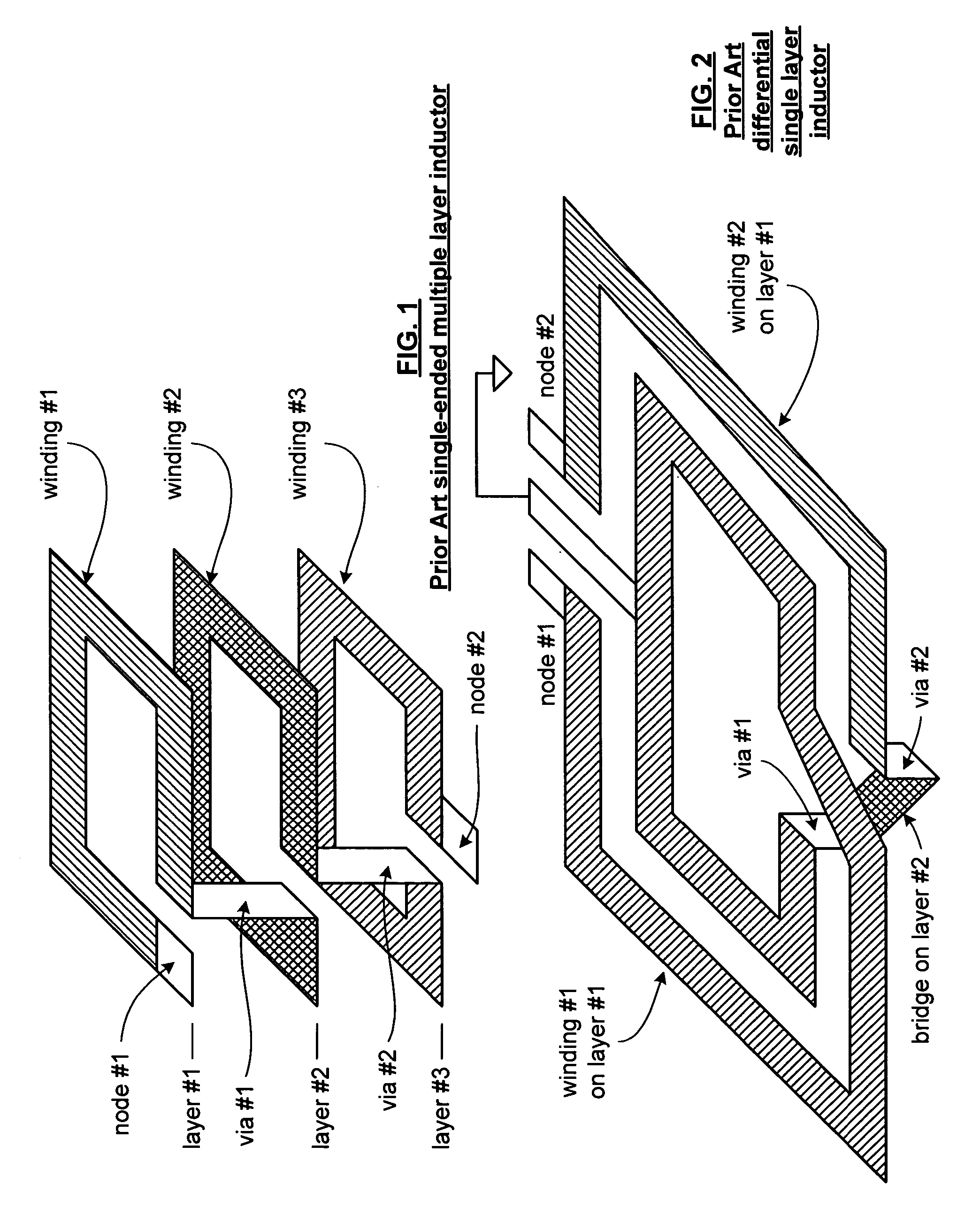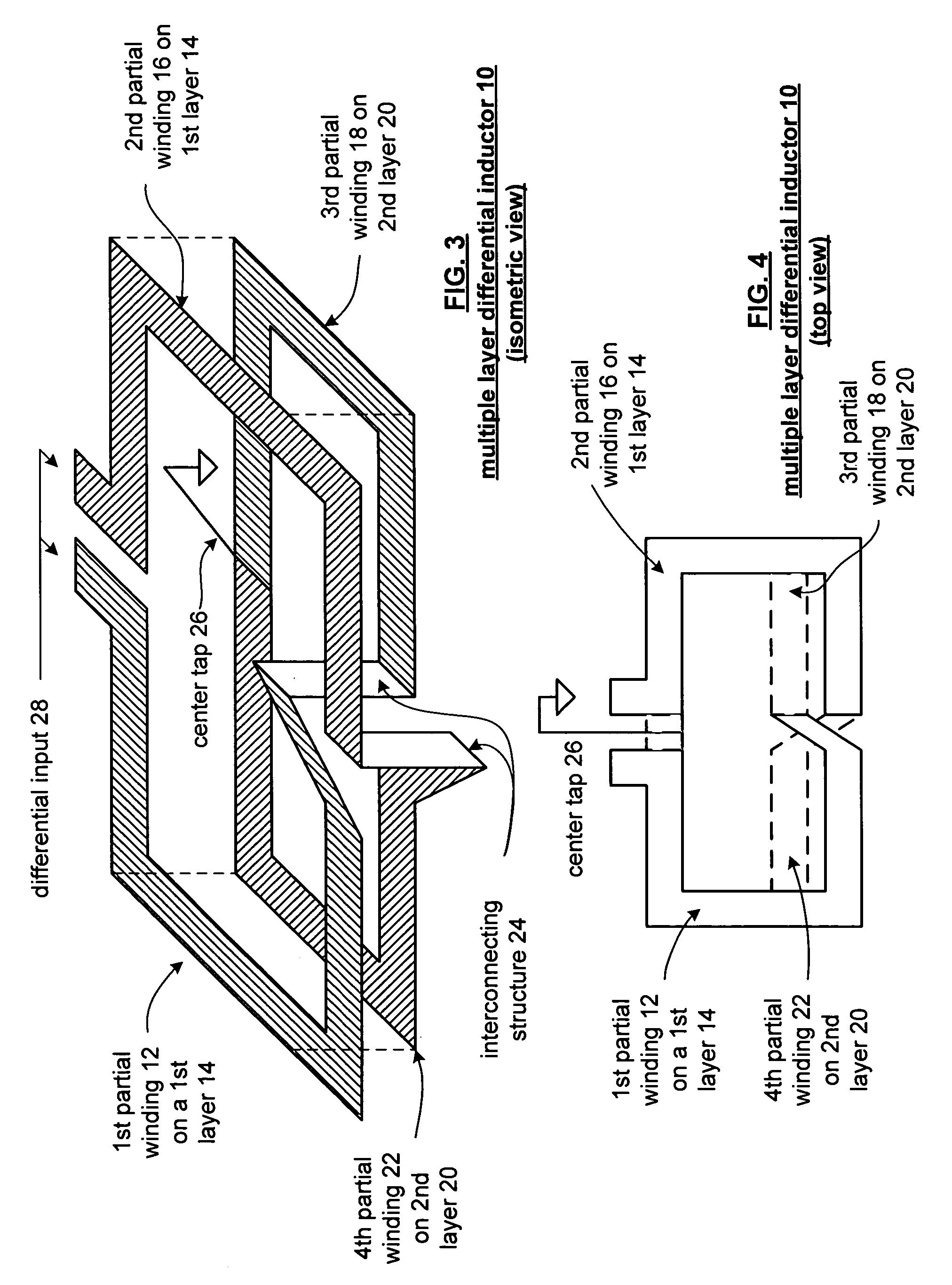On-chip differential multi-layer inductor
- Summary
- Abstract
- Description
- Claims
- Application Information
AI Technical Summary
Benefits of technology
Problems solved by technology
Method used
Image
Examples
Embodiment Construction
[0023]FIG. 3 illustrates an isometric view of a multiple layer differential inductor 10 that includes a 1st partial winding 12 on a 1st layer 14 of an integrated circuit, a 2nd partial winding 16 on the 1st layer 14, a 3rd partial winding 18 on a 2nd layer 20 of the integrated circuit, a 4th partial winding 22 on the 2nd layer 20, an interconnecting structure 24, and a center tap 26. The 1st and 2nd partial windings 12 and 16 are operably coupled to receive a differential input 28. As can be seen in FIG. 3, the 1st partial winding 12 is coupled to the 3rd partial winding 18 by the interconnecting structure 24. Similarly, the 2nd partial winding 16 is coupled to the 4th partial winding 22 via the interconnecting structure 24. The 4th partial winding 22 and the 3rd partial winding 18 are both coupled to center tap 26. As configured, the winding formed by the 1st partial winding and 3rd partial winding 18 is identical (within manufacturing limits) to the winding formed by the 2nd parti...
PUM
| Property | Measurement | Unit |
|---|---|---|
| Length | aaaaa | aaaaa |
| Fraction | aaaaa | aaaaa |
| Thickness | aaaaa | aaaaa |
Abstract
Description
Claims
Application Information
 Login to View More
Login to View More - R&D
- Intellectual Property
- Life Sciences
- Materials
- Tech Scout
- Unparalleled Data Quality
- Higher Quality Content
- 60% Fewer Hallucinations
Browse by: Latest US Patents, China's latest patents, Technical Efficacy Thesaurus, Application Domain, Technology Topic, Popular Technical Reports.
© 2025 PatSnap. All rights reserved.Legal|Privacy policy|Modern Slavery Act Transparency Statement|Sitemap|About US| Contact US: help@patsnap.com



